Abstract
Chronic exposure of hybrid poplar (Populus deltoides × trichocarpa) plants to low concentrations of ozone had negative impact upon net photosynthetic capacity, dark respiration, and leaf chlorophyll contents. Exposure to as much as 0.20 microliters per liter O3 had no immediate effect on net photosynthesis (Pn), but chronic exposure to 0.125 or 0.085 microliters per liter had a number of gradual effects on CO2 exchange. These included increased dark respiration and consequently increased light compensation points in very young leaves (4-6 days old); and decreased Pn, leaf chlorophyll a and b contents, light saturation points, and apparent quantum yields in leaves 10 to 70 days old. Decreased Pn was partially due to accelerated aging in leaves exposed to O3, and lightsaturated Pn was linearly related to chlorophyll a + b contents. Differences in light-saturated Pn between control and O3-treated leaves of the same age were mostly due to photosaturation in O3-treated leaves and to a much lesser extent to lowered apparent quantum yields. Also, since Pn and dark respiration were most affected by O3 at different leaf ages, distinct modes of action are suggested. The effects of leaf aging on CO2 exchange were considerable, but typical of other species. However, careful monitoring of the interacting effects of leaf age and pollutant exposure was needed in order to characterize the impact of chronic O3 exposure upon CO2 exchange.
Full text
PDF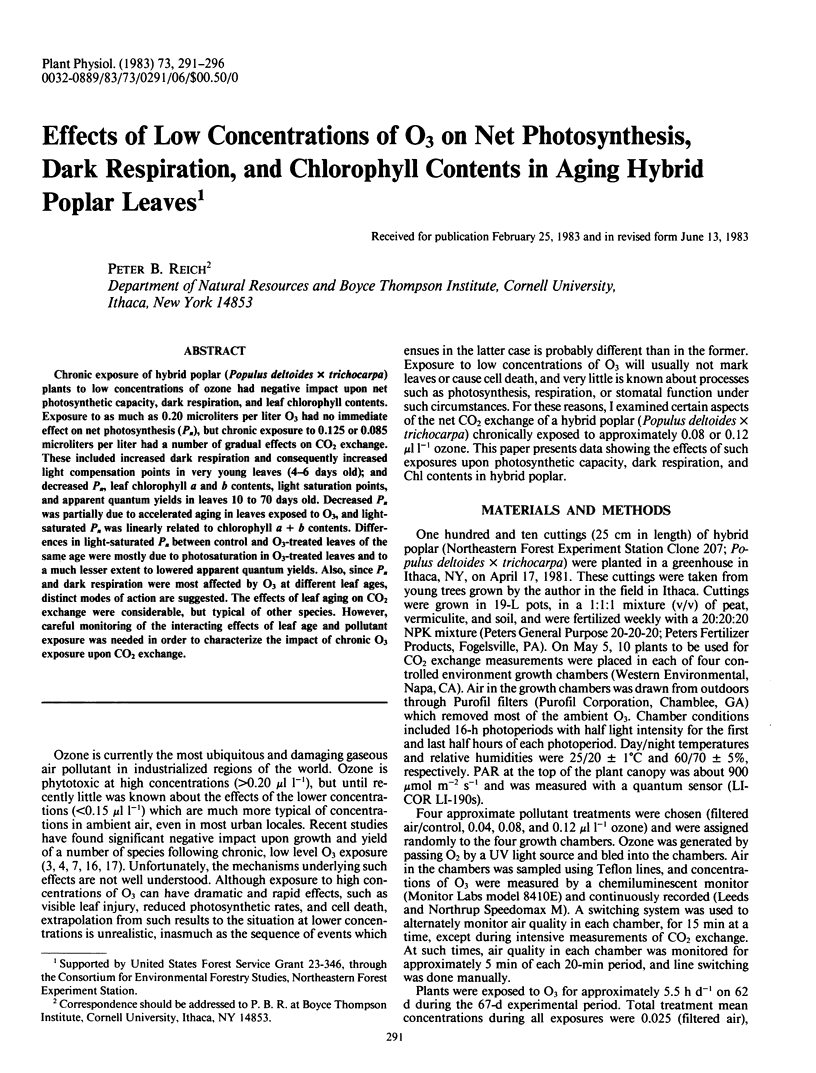
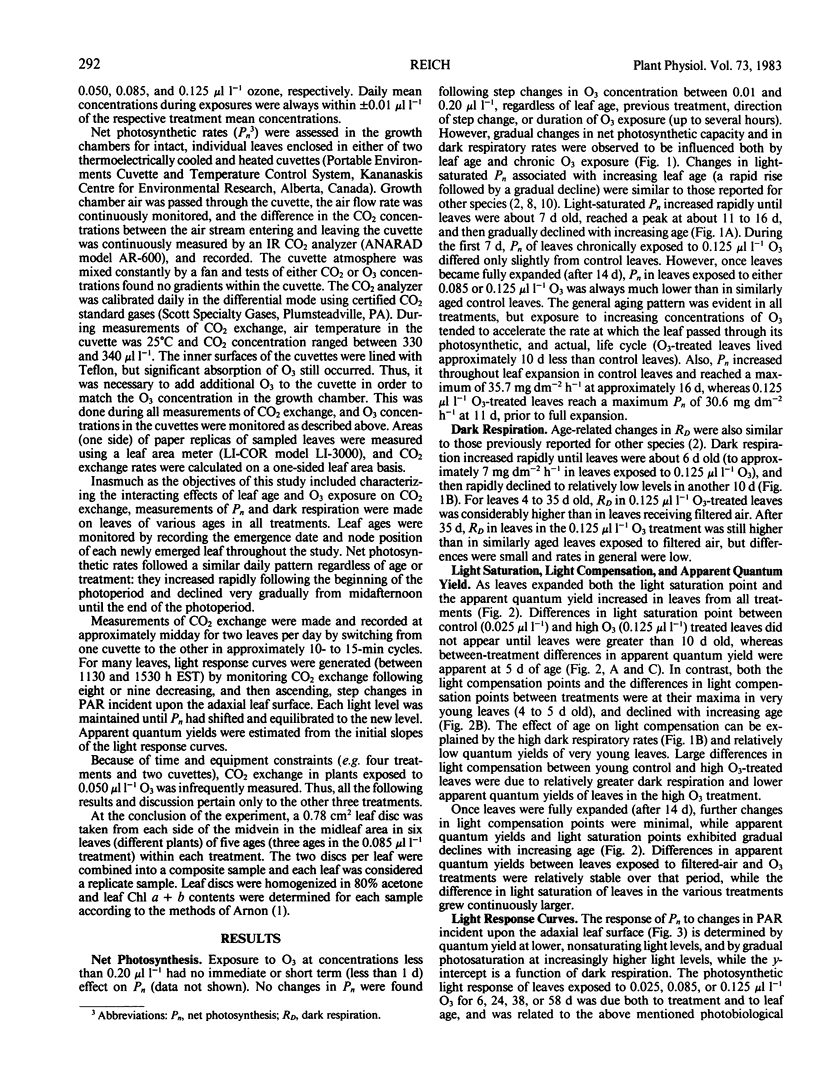
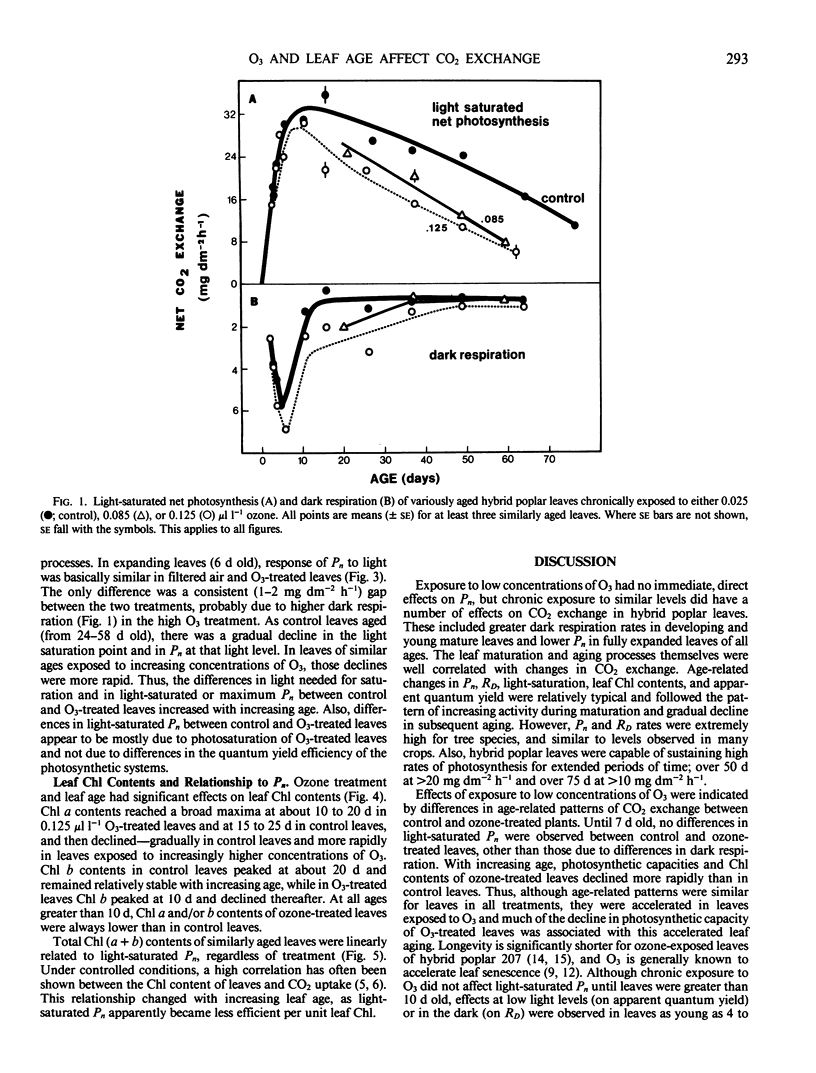
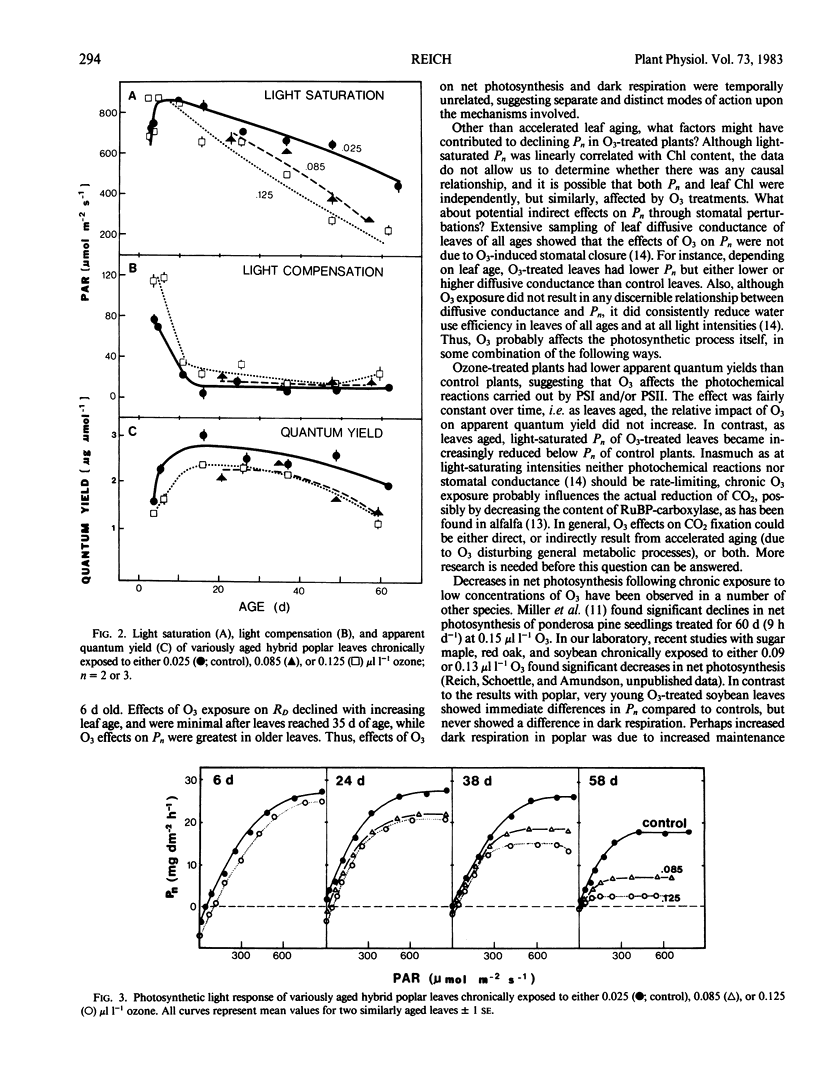
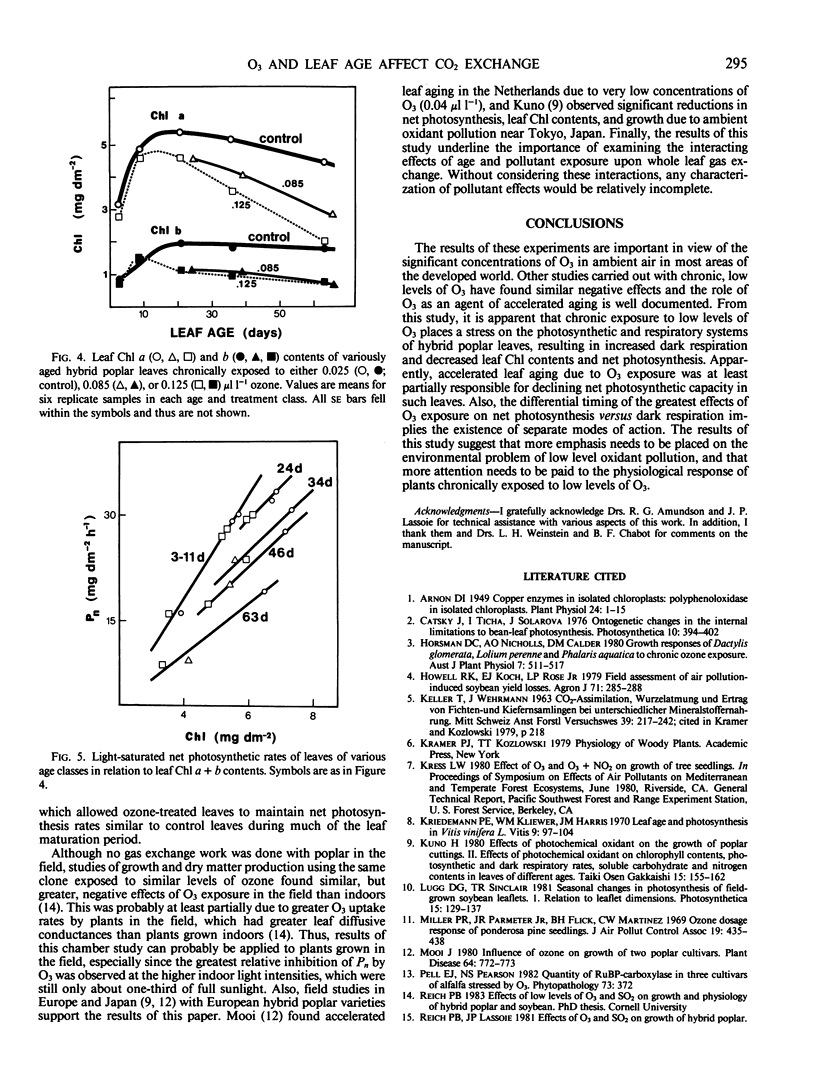

Selected References
These references are in PubMed. This may not be the complete list of references from this article.
- Arnon D. I. COPPER ENZYMES IN ISOLATED CHLOROPLASTS. POLYPHENOLOXIDASE IN BETA VULGARIS. Plant Physiol. 1949 Jan;24(1):1–15. doi: 10.1104/pp.24.1.1. [DOI] [PMC free article] [PubMed] [Google Scholar]


